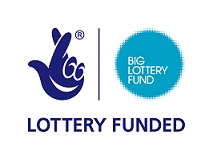Contact secured funding from the Big Lottery’s Reaching Out: Empowering Young People project for the delivery of the Aggression Related Trauma project which commenced in October 2013.
Aggression Related Trauma (ART) – Recovery for Youth engages with children and young people, aged 8 – 20 years old who are at risk as a result of their trauma. This can include young people who are disengaged from education and/or leaving the care system, or are at risk of or engaging in risk taking behaviours e.g. criminal activity, drug/alcohol misuse etc., as a direct consequence of their experience of aggression related trauma.
Aggression Related Trauma is trauma that results from deliberate harm perpetrated by another person specifically physical, emotional or sexual abuse. It does not include neglect.
The project is delivered through a multi–agency approach ensuring that treatment for the child/young person is comprehensive and appropriate, thus improving mental health, well–being and assisting in addressing trauma recovery. This project is for the Northern Health and Social Care Trust Area only.
- The child or young person can access Creative Arts Therapy or Talking Therapy weekly for up to one year
- The parent /carer can also receive parallel support particularly for parents /carers of young children
To find out more about the Aggression Related Trauma Project please contact:
Project Coordinator – Rosie Smyth
E–mail rosie.smyth@contactni.com
Mobile: 07792252944
Contact Head Office: 028 90 744499
Art Projects To Overcome Agression

- deterioration of the social conditions of children;
- the crisis of family education;
- inattention of the school to the neuropsychic state of children;
- an increase in the proportion of pathological births that leave consequences in the form of damage to the child’s brain.
The media, film and video industries, which regularly promote violence, also contribute to their share.
In recent years, scientific interest in the problems of young aggression has increased significantly. But, unfortunately, the most part of therapy includes theoretical considerations about its mechanisms and manifestations. At the same time, there are relatively few studies based on real experience of correction and therapy.
Meanwhile, it is especially important to help preschoolers, whose aggression is only at the stage of formation. This allows for timely corrective action.
No other behavior irritates adults and maladjusts children more than aggressive behavior. This is one of the few conditions when parents try to bring their child to a specialist as early as possible. Aggression manifests itself in a wide range from harsh statements to physical actions, which is the rare case when a sick child evokes universal irritation instead of sympathy and often responding aggression, even from specialists.
Aggressive children are one of the most unmanageable and difficult to treat patients. Manifestations of aggression are most often found in mental illness, the first place in the therapy of which, naturally, belongs to drug, biological therapy. However, psychocorrectional methods play a very important role here, because without them the adaptation of a preschooler to the surrounding social environment is impossible.
Art projects and therapies are one of the elements of treatment and rehabilitation. It is used for the purpose of prevention or development. To date, foreign and domestic specialists have accumulated rich experience in using art therapy in working with children, including preschool children.
Art therapy classes with children of early, junior and middle preschool ages have a number of features both in terms of the artistic means and techniques used, and in terms of the interaction of a specialist with a child.
It is a confirmed fact that the period of early, junior and middle preschool childhood is saturated with various forms of education. Adults, by all means, want to give the child as much information as possible, to form skills and abilities. And this process is certainly very important.
The goals of art therapy
- Provide a socially acceptable outlet for aggression and other negative feelings (drawings, paintings, sculptures are a safe way to decrease tension).
- Facilitate the healing process. Unconscious inner conflicts and experiences are often easier to express through visual images than to express them in the process of verbal correction. Non-verbal communication more easily eludes consciousness censorship.
- Get material for interpretation and diagnostic conclusions. Artistic products are relatively durable and the client cannot deny that they exist. The content and style of art projects provide an opportunity to obtain information about the client, who can help in the interpretation of their works.
- Pick thoughts and feelings to pieces that the client is used to suppressing. Sometimes non-verbal means are the only means available to express and clarify strong feelings and beliefs.
- Build a sense of inner control up. Drawing, painting, or sculpting involves arranging colors and shapes.
- Concentrate on sensations and feelings. Visual arts classes provide rich opportunities for experimenting with kinesthetic and visual sensations and developing the ability to perceive them.
- Develop artistic ability and enhance self-esteem. A by-product of art therapy is the sense of satisfaction that results from the discovery and development of hidden talents.
But also a necessary element of the child’s development is the ability to freely express oneself in various types of play activities, which, in particular, are organically present in the visual arts. It is no coincidence that many of the therapeutic and developmental effects of training young children with an art therapist are due to the child’s interaction with visual materials.



